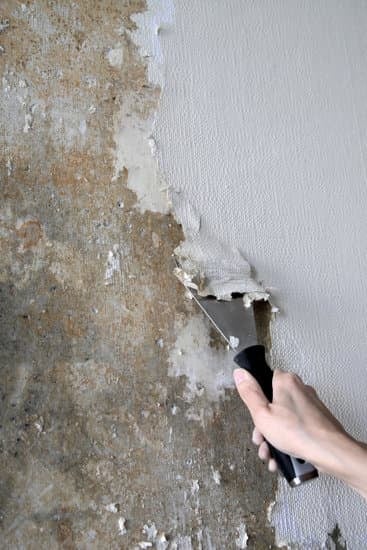Are you struggling with weak wireless signal strength in your home? In today’s digital age, a strong and reliable wireless signal is crucial for powering various devices and activities within the home. From streaming movies to conducting video calls, a strong signal is essential for a smooth and uninterrupted experience.
However, many homeowners face common issues such as dead zones or dropped connections due to poor signal strength. In this article, we will explore how to improve wireless signal strength in the home, offering practical tips and strategies for achieving a more robust network.
Firstly, it’s important to understand what wireless signal strength entails. Simply put, it refers to the power of the radio waves being transmitted from your router to your device, and vice versa. The stronger the signal, the better the performance of your wireless network.
In a home setting, having a strong signal is crucial for seamless connectivity across multiple devices. Common issues associated with weak signal include slow internet speeds, frequent disconnections, and difficulty connecting in certain areas of the home.
To tackle these issues effectively, it’s essential to start by understanding your home network and how it functions. By identifying potential obstacles that may be affecting your signal strength within your home, you can take targeted steps to optimize your network for improved performance.
This includes assessing factors such as router placement and interference from other devices that may be impacting your signal reception. With a comprehensive understanding of your network’s dynamics, you can then proceed to implement practical solutions tailored to enhance your wireless signal strength.
Understanding Your Home Network
Wireless signal strength is a critical factor in ensuring a reliable and fast home network. The strength of the wireless signal determines the speed and stability of your internet connection, making it essential for activities such as online gaming, video streaming, and video conferencing.
Weak signal strength can lead to slow internet speeds, dropped connections, and frustrating lag times. To ensure a strong wireless signal in your home, it’s important to understand how wireless networks function and the potential obstacles to signal strength within the home.
Wireless networks operate through radio waves that are transmitted between devices and the router. However, these radio waves can be obstructed or weakened by various obstacles within the home. Common obstacles include walls, floors, large appliances, electronic devices, mirrors, metal objects, and even other wireless networks in close proximity. Understanding the layout of your home and identifying potential obstacles can help you determine the source of weak signal and take necessary steps to improve it.
Identifying the source of weak signal is crucial for improving wireless signal strength in the home. By understanding how wireless networks function and recognizing potential obstacles within your home, you can take strategic measures to optimize router placement and enhance router reception throughout your living space. Additionally, this understanding will help you make informed decisions about upgrading equipment, implementing signal-boosting techniques, managing network congestion, troubleshooting common issues, and ultimately improving the overall performance of your home network.
Optimizing Router Placement
When it comes to improving the wireless signal strength in your home, the placement of your router plays a significant role. Here are some tips for achieving the ideal router placement within your home:
- Central Location: Positioning your router in a central location within your home can help distribute the wireless signal more evenly throughout the space. This is especially important if you have multiple floors or areas with thick walls that can block the signal.
- Elevate the Router: Placing the router on a higher shelf or mounting it on the wall can also improve its coverage area. By elevating the router, you can minimize obstructions and interference from furniture, appliances, and other electronic devices.
- Avoid Interference: Keep the router away from other electronics that can cause interference, such as cordless phones, microwave ovens, and Bluetooth devices. Additionally, positioning the router away from metal objects and reflective surfaces can help reduce signal degradation.
In addition to these tips for optimal router placement, it’s essential to consider enhancing your router reception throughout your home. One way to achieve this is by using external antennas or installing a mesh Wi-Fi system to extend coverage to all areas of your home. By following these strategies for optimizing router placement and enhancing reception, you can significantly improve wireless signal strength in your home.
Remember that simply moving the position of your existing equipment may not be enough to solve issues related to weak signal strength in some homes. Consider upgrading to a new, more powerful router if you continue to experience problems even after optimizing placement and reception techniques.
Upgrading Your Equipment
When looking to improve wireless signal strength in the home, one of the most effective steps is to upgrade to a newer, more powerful router. Advancements in technology have led to routers that offer better range, faster speeds, and improved reliability. These modern routers often come with multiple antennas and advanced features such as beamforming, which helps direct the signal towards connected devices, resulting in stronger and more consistent coverage throughout the home.
Considerations When Choosing a New Router
When considering an upgrade to your router, it’s important to choose one that meets the specific needs of your household. Factors to consider include the size of your home, the number of connected devices, and the types of activities performed on the network (such as streaming, gaming, or video conferencing). Additionally, it’s crucial to select a router that supports the latest WiFi standards-such as 802.11ac or 802.11ax-for optimal performance.
The Importance of Firmware Updates and Security
In maintaining Signal Strength Upgrading equipment goes beyond just replacing your old router-it also involves keeping it updated with the latest firmware and security patches. Manufacturers regularly release updates to address performance issues and security vulnerabilities, so it’s vital to regularly check for and install these updates. Additionally securing your network with WPA3 encryption can further enhance signal strength by preventing unauthorized access and interference from neighboring networks.
By carefully selecting a new router that suits your specific needs and ensuring it is up-to-date with firmware upgrades and security measures will greatly improve wireless signal strength in your home network.
Implementing Signal-Boosting Techniques
Explanation of Signal-Boosting Techniques
Implementing signal-boosting techniques can significantly improve the wireless signal strength in your home. WiFi extenders, repeaters, and mesh networks are all popular methods for extending the range and enhancing the strength of your wireless signal. WiFi extenders amplify the existing signal from your router and rebroadcast it to reach areas with weak reception.
Repeaters work similarly but create a separate network, which may result in slower speeds. Mesh networks, on the other hand, use multiple access points spread throughout the home to create a seamless and consistent signal.
Proper Setup and Configuration
When implementing signal-boosting devices, it is crucial to set them up properly for maximum effectiveness. Ensure that the devices are strategically placed within the home to provide optimal coverage and avoid interference. Additionally, be sure to configure these devices according to the manufacturer’s instructions to guarantee seamless integration with your existing network. Choosing the right type of device and properly configuring it can make a significant difference in improving your wireless signal strength throughout your home.
Benefits and Limitations
Each signal-boosting technique comes with its own set of benefits and limitations that should be considered before making a decision. WiFi extenders are easy to install and cost-effective but may lead to decreased overall network speed due to shared bandwidth.
Repeaters can cause a drop in speed due to creating a separate network, while mesh networks typically offer seamless coverage but can be more complex to set up. Understanding these benefits and limitations is essential in determining which method will best suit your home network needs.
By implementing these signal-boosting techniques effectively within your home, you can enhance your wireless signal strength and ensure reliable connectivity throughout your living space.
Managing Network Congestion
In today’s modern homes, the demand for a strong and reliable wireless signal is higher than ever. With the increasing number of devices connected to a single network, network congestion can greatly impact the strength and quality of the wireless signal. So, how to improve wireless signal strength in home? One important aspect to consider is managing network congestion effectively.
To better understand how to manage network congestion, it is important to first identify the devices that are causing this congestion. Devices such as smartphones, laptops, smart TVs, gaming consoles, and even smart home devices can all contribute to an overcrowded network. By actively monitoring and controlling the usage of these devices, you can optimize your bandwidth usage and ultimately improve your wireless signal strength.
One effective way to manage network congestion is by implementing Quality of Service (QoS) settings on your router. QoS settings allow you to prioritize certain types of traffic on your network, ensuring that essential tasks such as video calls or online gaming are given priority over less critical activities like file downloads. By utilizing QoS settings, you can prevent certain devices or applications from monopolizing your bandwidth, thus improving overall signal reception throughout your home.
Additionally, it’s important to regularly monitor and review the performance of your network. Analyzing data usage patterns and identifying any potential bottlenecks in your home network can help in better managing network congestion. By staying proactive and taking necessary measures to address congestion issues promptly, you can effectively improve the wireless signal strength in your home network.
Troubleshooting Common Issues
When it comes to improving wireless signal strength in your home, troubleshooting common issues is a crucial step in the process. Identifying and resolving issues that may be causing weak signal can significantly enhance the overall performance of your home network. Here are some common issues you might encounter and some steps you can take to troubleshoot them:
1. Interference from other devices: One of the most common causes of weak wireless signal is interference from other electronic devices such as cordless phones, microwaves, or even Bluetooth devices. To troubleshoot this issue, try to keep these devices away from your router and other wireless equipment. Additionally, consider using devices that operate on different frequency bands to minimize interference.
2. Outdated firmware: Outdated router firmware can also lead to poor signal strength. Regularly updating your router’s firmware is essential for maintaining optimal performance. Check the manufacturer’s website for updates and follow their instructions for installing the latest firmware.
3. Network congestion: If you have multiple devices connected to your home network, network congestion may be causing poor signal strength. To troubleshoot this issue, consider limiting the number of active devices on your network or using Quality of Service (QoS) settings on your router to prioritize certain types of traffic.
4. Signal blockage: Physical obstacles such as walls, furniture, or appliances can obstruct the wireless signal in your home. To troubleshoot this issue, try repositioning your router to a more central location within your home and away from potential obstructions.
By addressing these common issues and following the troubleshooting steps outlined above, you can effectively improve the wireless signal strength in your home and ensure a more reliable and efficient home network.
Remember that identifying and resolving these common issues is essential for maintaining strong wireless signal throughout your home network. By taking proactive steps to troubleshoot and resolve any issues affecting your wireless signal, you can create a more robust and reliable network for all of your connected devices.
Conclusion
In conclusion, having a strong wireless signal in your home is crucial for maintaining a reliable and fast internet connection. The importance of this cannot be overstated, as it directly impacts the performance of all devices within your network. By understanding how wireless networks function and identifying potential obstacles to signal strength within your home, you can take proactive steps to improve the overall performance of your network.
Optimizing router placement is a key factor in improving signal strength, as well as upgrading your equipment to a newer and more powerful router. Additionally, implementing signal-boosting techniques such as WiFi extenders, repeaters, and mesh networks can significantly enhance the reach and stability of your wireless network. Lastly, managing network congestion and troubleshooting common issues are essential steps in maintaining optimal signal strength.
In summary, by implementing the strategies outlined in this article such as optimizing router placement, upgrading equipment, utilizing signal-boosting techniques, managing network congestion, and troubleshooting common issues, you can significantly improve the wireless signal strength in your home. I encourage you to take action and implement these recommendations to enjoy a stronger and more reliable home network. With these solutions at hand, you can ensure that all devices in your home benefit from excellent connectivity and performance.
Frequently Asked Questions
How Can I Boost My Wi-Fi Signal in My House?
To boost the Wi-Fi signal in your house, you can start by repositioning your router to a central location and away from obstructions. Upgrading to a newer router with better range and using a Wi-Fi extender or mesh network can also help improve the signal strength.
How Can I Make My House Signal Stronger?
Making your house signal stronger involves optimizing the placement of your router, ensuring it’s not blocked by walls or appliances. Using a Wi-Fi range extender or mesh system can also help eliminate dead zones and improve coverage throughout the house.
Why Is My Wireless Signal So Weak in My House?
Several factors could be causing a weak wireless signal in your house, including interference from other electronic devices, thick walls or large distances between the router and connected devices, outdated router technology, or simply too many devices vying for the same bandwidth. Identifying and addressing these issues can help improve your wireless signal strength.

I’m thrilled to have you here as a part of the Remodeling Top community. This is where my journey as an architect and remodeling enthusiast intersects with your passion for transforming houses into dream homes.





